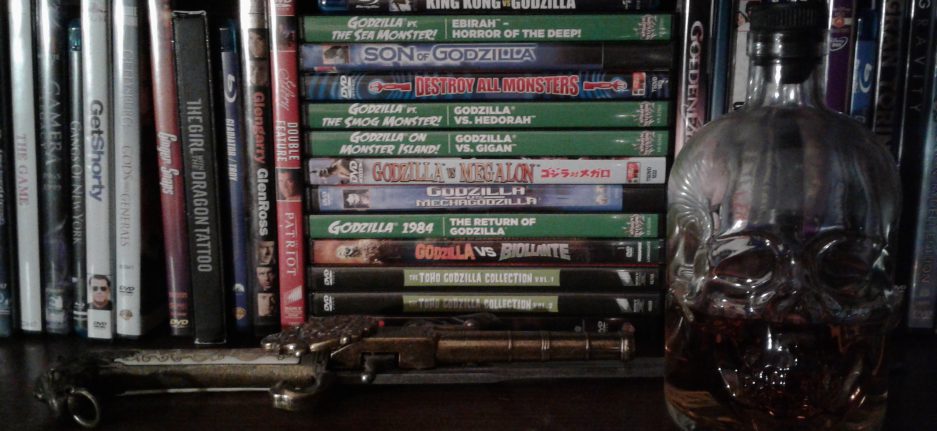You guys ever heard of this obscure historical figure named Elizabeth? Queen of England for some forty-five years or so, Protestant during a time of religious turmoil, famously never married? Yeah, I’d venture a guess that you’re fairly familiar with her. Someone you might not be as familiar with, though is her cousin Mary, who reigned as Queen of Scotland during a portion of Elizabeth’s tenure. You might know her as the subject of the nursery rhyme “Mary, Mary, Quite Contrary”: One interpretation of the lyrics posits that the question “how does your garden grow?” inquires into the political stability of Scotland during he reign; the silver bells are a reference to religious strife, symbolizing either her suspicious Catholic heritage or the Protestant stirrings against her; the cockle shells a play on “cuckold”, insinuating that her husband cheated on her; and the “pretty maids all in a row” referring to her ladies-in-waiting. Hell, the title itself could very well be noting her clashes with both her own nobles and Elizabeth down in England. It’s not a settled thing, granted, but I rather like this possibility. All of these interpretations can be found manifested in the historical drama Mary, Queen of Scots (I added the comma, based on a previous film of the same title and the fact that I couldn’t stand a lack of punctuation there).

The film tells the story of Mary’s reign from her landing in Scotland in 1561 following the death of her husband, King Francis II of France. We see her maneuver to embolden her authority, clash with the nobles and John Knox, head of the Presbyterian Church of Scotland, and jibe with her English counterpart over potential husbands and the English royal succession (Mary had a claim to the English throne as a descendant of Henry VIII’s eldest sister, though Henry’s will essentially forbade the Stuarts from inheriting the throne, favoring his own issue, even if there were some problems with legitimacy of births).
Something slightly refreshing, the film isn’t necessarily trying to be an exactly accurate historical narrative. Indeed, the focus is on structures of power and the roles of women therewithin. A feminist lens is blatant and palpable, casting aspersions on the treatment of women in the sixteenth century, regardless of their position in society: Despite being heralded as sovereigns of their respective countries, both Mary and Elizabeth are seen as being actively distrusted by their male councils, who often work toward their own ends rather than by following the decrees of their monarchs. Many a line of dialogue is tossed out wherein the men doubt the abilities of women to rule even-headedly, and marital relations become strained because of the men being unable to submit to their royal wives, regardless of the context. We even get a bit of queer theory in there as well, with Mary’s ostensibly homosexual private secretary David Rizzio and his impact on her story. There’s also a twinge of Annales School historiography in there, showing that even monarchs we might consider absolute (even though absolutism is normally conceived of as an invention of the following two centuries in Europe, the everyday conception of monarchy tends toward some form of absolutism) were often highly constrained and even powerless against their own councils, nobles, or populaces. Whether these lenses are applied in John Guy’s biography, upon which the film is based, I’m not sure, but my curiosity is certainly piqued. Aside from decidedly modern period pieces like The King’s Speech or highly individual cases like The Madness of King George, this is a form of historical portrayal we rarely see, though it most definitely more mirrors the realities of monarchs of those (and pretty much all) times. Potential inaccuracies and gloss-overs I can ignore (and there are plenty of the latter, if you ask me), especially if we get a relatively unique methodological approach to history.
Working strongly within this methodology are the two stars, Saoirse Ronan and Margot Robbie as Mary and Elizabeth, respectively. Ronan plays up her character’s boldness in the face of political and religious resistance to her rule (particularly the threat stemming from the fire-stoking preaching of David Tennant’s John Knox and the scheming of James McArdle’s Earl of Moray (Mary’s half-brother and regent of Scotland during both her absence and the first few years of the young James VI’s rule) and Ian Hart’s Lord Maitland (no relation to the Beetlejuice couple, as far as I know)), while also playing up her willingness to find a husband and produce an heir; in contrast, Robbie strikes an unenviable figure in Elizabeth, who is shown being wildly paranoid about threats to her position on the throne and ardent about not submitting to marriage, finding the throne itself to be far too consuming as it is. The feminist lens shines brightly in the relationship between the two monarchs, painting Elizabeth as being more man than woman, so to speak, forced into that paradigm by the machinations of her council and the constraints of statecraft. Both actresses avail themselves well, with Robbie playing a bit against type as the slightly cowed yet still strong-willed Elizabeth. We see some strong makeup work here as well, led by the efforts of Jenny Shircore, Hannah Edwards, and Sarah Kelly.
For me, Mary, Queen of Scots is a strong bit of post-modern historical storytelling that welcomely emphasizes character and character interactions over sweeping historical narratives. It’s vibrant and entertaining, and it’s more than worthy of a theatrical watch.
